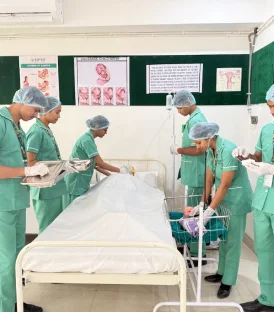February 19, 2024
Haemostasis: is the process by which the bleeding from injured site is arrested by formation of haemostatic plug, followed by removed of that plug spontaneously in due course of time.
Following five components are involved in arrest of such a bleeding and subsequent removal of haemostatic plug:
1. Integrity of vascular wall
2. Platelets – abnormalities in count and function
3. Coagulation system – various plasma coagulation factors
4. Fibrinolytic mechanism
5. Inhibitors of coagulation
Screening Test of Haemostasis:
- Bleeding time: To test platelet function and vascular function.
- Clotting Time: Test platelets count and function and coagulation
- Prothrombin Time: Tests extrinsic pathway
- Activated Partial Thromboplastin time: Test Intrinsic pathway.
- Fibrinogen level: First coagulation factor
- Thrombin clotting time: common pathways.
1. Activated Partial Thromboplastin Time (APTT): This test measures the time it takes for a clot to form after certain substances are added to the blood sample. It evaluates the intrinsic pathway of coagulation and can help detect deficiencies or abnormalities in factors VIII, IX, XI, or XII.
2. Prothrombin Time (PT): This test measures the time it takes for a clot to form after the addition of specific substances. It evaluates the extrinsic pathway of coagulation and can detect deficiencies or abnormalities in factors II, V, VII, or X.
3. Platelet Count: This test measures the number of platelets in the blood. Platelets are important for clot formation, so a low platelet count may indicate a potential bleeding disorder.
4. Bleeding Time Test: This test measures the time it takes for a small cut to stop bleeding. It evaluates platelet function and can help identify platelet disorders or abnormalities.
5. Fibrinogen Level: Fibrinogen is a protein essential for clot formation. This test measures the concentration of fibrinogen in the blood and can detect deficiencies or abnormalities that may affect clotting ability.
6. Thrombin Time: This test measures the time it takes for fibrinogen to convert into fibrin, the main component of blood clots. It evaluates the final step of the clotting process and can help detect abnormalities in fibrinogen or fibrin formation.
These tests are often performed in combination to evaluate different aspects of the haemostasis process. They can help diagnose bleeding disorders, monitor anticoagulant therapy, or assess the risk of excessive clotting.

















